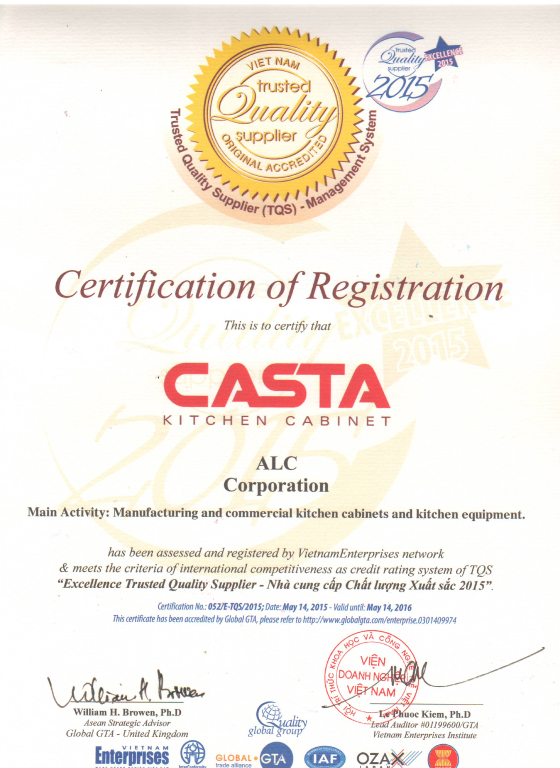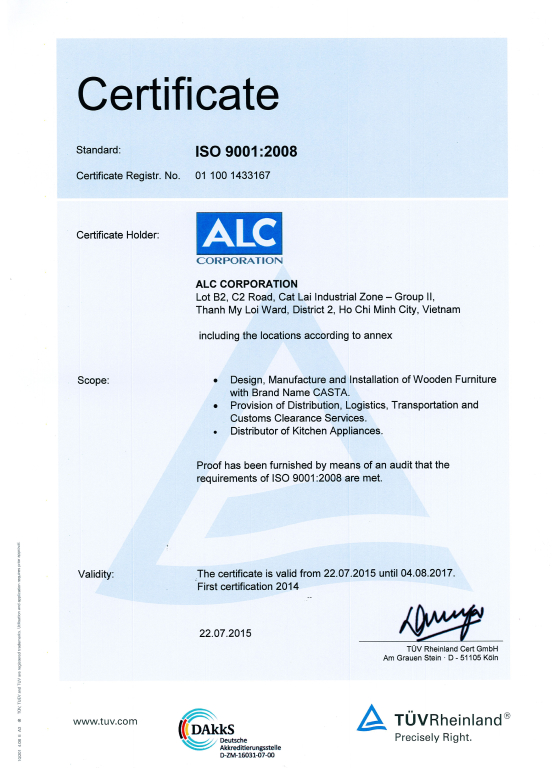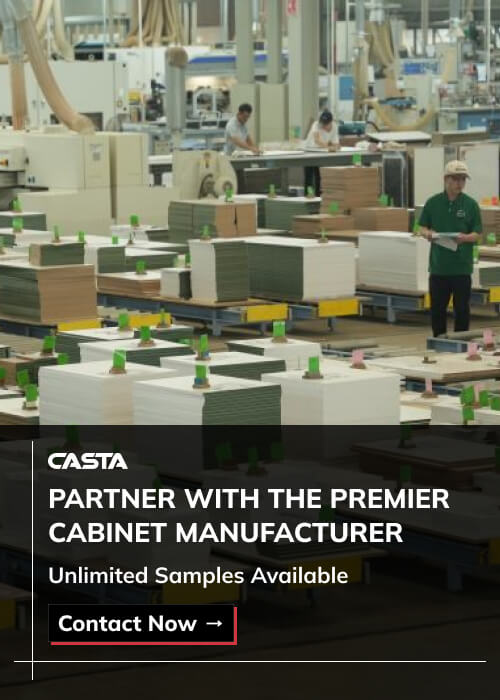The U.S. cabinet market is transforming: KCMA data shows overall sales dipping even as custom cabinetry demand rises. In 2025, ending the tax‑evasion probe on Vietnamese wooden cabinets reshaped price trends and boosted trade metrics. This article explores these shifts—key data, market movements, and global policy impacts—to help contractors, cabinet brands, and furniture companies navigate today’s competitive landscape.
Table of Contents
1. Cabinet Sales Continue Downward Trend – Understanding the KCMA Report
The US cabinet market is undergoing significant shifts. Recent insights from the Kitchen Cabinet Manufacturers Association (KCMA) reveal a downward trend in cabinet sales—a trend that has profound implications for the custom cabinet industry. In 2025, after years of uncertainty, the US government ended its tax evasion investigation into Vietnamese wooden cabinets, a decision that has further influenced cabinet market trends.
1.1 Overview of the KCMA Report
The KCMA Report tracks US cabinet market statistics, offering invaluable data on sales, pricing, and market dynamics. Recent findings show that cabinet sales have been declining, affecting procurement, pricing strategies, and supply chain stability for contractors, cabinet brands, and furniture companies across North America.
1.2 Relevance to Contractors and Brands
For industry players, understanding these cabinet market trends is crucial. Declining sales can impact contract negotiations and lead to fluctuations in cabinet price trends, making it essential to adapt procurement and marketing strategies accordingly. The KCMA report helps industry professionals align their product offerings with evolving consumer demands and manage risks associated with supply chain and cost fluctuations.
1.3 Specific Solutions for the Market
- Marketing: Enhance digital campaigns and target niche markets to stimulate demand.
- Use Houzz Pro or Buildertrend to showcase project galleries and capture leads in targeted ZIP codes.
- Run Google Ads with geo‑fencing around new residential developments and home‑renovation hotspots.
- Leverage email drip campaigns via Mailchimp segmented by project type (multi‑unit vs. custom homes) to nurture warm leads.
- Pricing: Implement dynamic pricing strategies and offer bulk purchase discounts.
- Reference the KCMA Quarterly Price Index to adjust rates in line with material cost swings, locking in client quotes for 90 days.
- Offer tiered volume discounts—e.g., 5% off for orders over 50 cabinets, 10% off for 100+—using a sliding scale built into your quoting software (like Procore).
- Implement time‑and‑materials contracts with predefined escalation clauses tied to the Producer Price Index (PPI) for wood products.
- Logistics: Optimize supply chain operations by partnering with reliable logistics providers to minimize delays and reduce costs.
- Integrate a TMS (Transportation Management System) module in your ERP (e.g., SAP S/4HANA) to plan multi‑modal shipments and optimize routes.
- Partner with freight providers offering Guaranteed Delivery Windows and track shipments via GPS‑enabled pallet tags.
- Maintain a 12‑week rolling safety stock of key components, calculated with an industry standard 1.25× lead‑time factor, to buffer against port congestion.
1.4 Importance of the Report
- Informed Procurement: Provides insights for better contract negotiations.
- Enhanced Design & Production: Aligns product offerings with current cabinet market trends.
- Competitive Edge: Differentiates products to capture market share.
- Risk Management: Supports adaptation to fluctuating material costs and supply disruptions.
- Future-Proofing Investments: Guides long-term strategic planning and stability.

2. Key Findings from the KCMA Report: Cabinet Market Trends
2.1 Sales Decline in the US Cabinet Market
The KCMA report indicates a notable decline in cabinet sales in the US. Key factors include:
- Market Saturation: Increased competition and a shift in consumer spending.
- Economic Uncertainty: Fluctuating raw material costs and supply chain challenges.
- Evolving Consumer Preferences: A growing demand for more customized, energy-efficient, and eco-friendly cabinets.
Comparative analysis with previous years shows that while overall sales have dropped, certain segments—such as the custom cabinet industry—are evolving to meet new consumer demands. For example, ready-to-assemble (RTA) cabinets have seen a rise in popularity as buyers seek cost-effective alternatives.
2.2 Impact on the Custom Cabinet Industry
Despite an overall 5.7% drop in U.S. cabinet sales in April 2024, custom cabinets saw a 3.9% year‑over‑year increase, underscoring their resilience . In August 2024, total cabinet shipments fell 1.5%, yet custom units still rose by 1.2% . This divergence reflects a sustained consumer appetite for personalized designs and premium finishes, even amid tighter budgets. Custom cabinetry typically commands higher margins, allowing contractors and brands to preserve profitability. Investing in advanced CNC machining and streamlined design‑approval processes will enable businesses to fully leverage this growth segment.
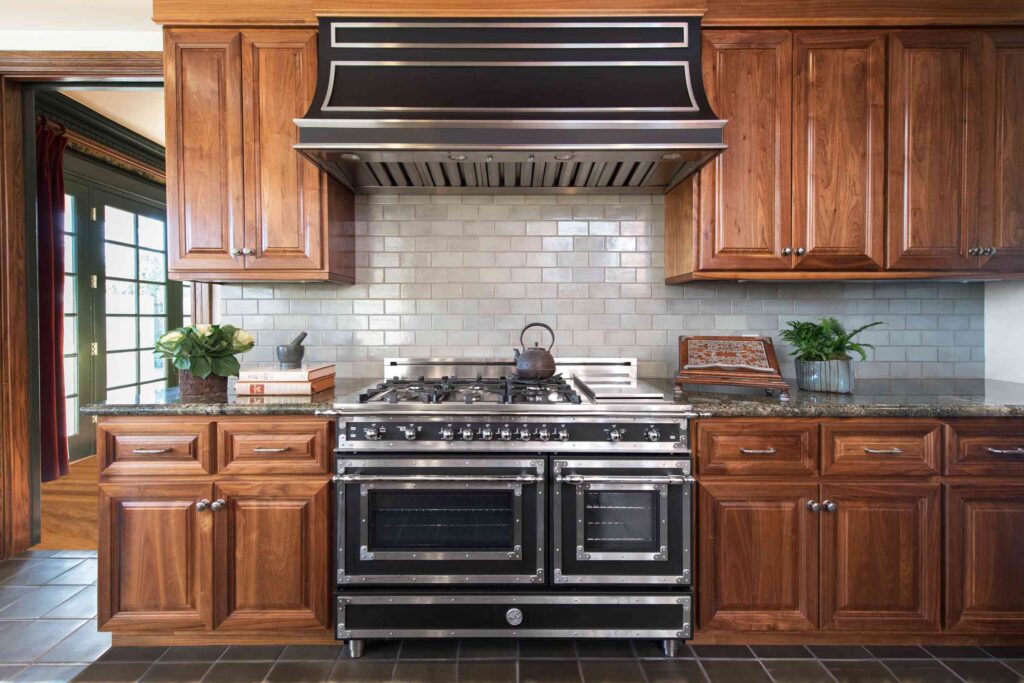
Learn more: Top rated cabinet manufacturers
3. Cabinet Price Trends and Market Statistics
Understanding cabinet price trends is essential for navigating today's evolving cabinet market trends. This section delves into the fluctuations in cabinet pricing and analyzes the latest US cabinet market statistics, providing valuable insights for the custom cabinet industry.
3.1 Price Fluctuations in the Cabinet Industry
Historical Price Evolution:
In recent years, cabinet price trends have been notably volatile. Data from 2023 and 2024 indicate that various factors have contributed to this fluctuation. Key drivers include rising raw material costs, shifting labor rates, and evolving market demand. For example, increased prices for wood and engineered panels have directly impacted production expenses. At the same time, higher labor costs in some manufacturing regions have pushed up overall cabinet prices, while economic pressures have forced manufacturers to adopt dynamic pricing strategies.
Raw Material Costs:
Fluctuations in the cost of premium wood, MDF, and other engineered materials have played a significant role. As raw material prices continue to rise due to global supply chain constraints and increased demand, these cabinet price trends reflect a corresponding upward pressure on the overall cost of cabinets.
Labor Rates:
Changes in labor costs, particularly in regions that supply a significant portion of the US cabinet market, have influenced cabinet pricing. In markets where labor costs are rising, production expenses increase, which is then passed on to the end consumer. Conversely, regions with lower labor costs have been able to offer more competitive pricing, contributing to shifting cabinet market trends.
Market Demand:
The downward trend in overall sales has led manufacturers to implement flexible pricing strategies. Analysts now predict an annual price increase of about 5-7% for cabinets. This expected price growth creates a sense of urgency for buyers to lock in current competitive prices before further price hikes affect their project budgets. These fluctuations and predictions are a critical component of overall US cabinet market statistics that inform the custom cabinet industry.
Future Market Predictions:
Looking forward, further improvements in supply chain efficiency and ongoing fluctuations in raw material availability are likely to drive future cabinet price trends. Manufacturers are investing in advanced production technologies and sustainable sourcing to mitigate these challenges. Monitoring these trends is essential for industry players to remain competitive in the evolving market.
Cost Optimization Tips:
- Lock in Rates Early: Secure current pricing before the next quarterly adjustment to save an estimated 5–7%.
- Bulk Purchasing: Consolidate orders across multiple projects to negotiate volume discounts on materials and shipping.
- Material Substitution: Where appropriate, specify mid‑range alternatives (e.g., blockboard or veneered particle board) for non‑visible components to lower costs without affecting perceived quality.
- Forward Contracts: Work with suppliers to set fixed‑price contracts for raw panels or hardware, shielding your projects from sudden market spikes.
- Just‑In‑Time Delivery: Schedule deliveries to align with installation dates—reducing on‑site storage needs and minimizing holding costs.
3.2 US Cabinet Market Statistics
The KCMA report provides a comprehensive breakdown of US cabinet market statistics, offering key insights that shape cabinet market trends across the custom cabinet industry.
Cabinet Types:
Kitchen cabinets account for roughly 60% of U.S. cabinet sales, with bathroom vanities at about 15% and other built‑ins making up the remainder.
Custom cabinets grew from a 20% share in 2022 to 25% in mid‑2024, even as mass‑produced lines fell 5.7% year‑over‑year in April 2024 .
- Implication: Custom products are capturing market share.
- Advice: Expand your custom‑cabinet offerings and promote bespoke designs to align with shifting demand.
Learn more: Ideal Custom Cabinets
Consumer Preferences:
45% of buyers now prioritize eco‑friendly materials, while 30% are willing to pay a 20–30% premium for personalized finishes.
- Implication: Sustainability and customization drive purchase decisions.
- Advice: Highlight CARB‑ and FSC‑certified lines and offer configurable finishes to command higher margins.
Learn more: Non toxic kitchen cabinets
Purchasing Trends:
Year‑to‑date through May 2024, total cabinet sales dropped 4.4%, yet custom units rose 7.2% . Average order value for custom cabinetry is up 12%.
- Implication: Buyers invest more per unit when they perceive added value.
- Advice: Use online configurators and precision CNC profiles to upsell clients on premium options.
Implications for the Industry:
These statistics underscore that custom, eco‑friendly cabinets outperform stock products in a declining market. Contractors and brands should adjust procurement by:
- Monitoring the KCMA price index to time material purchases.
- Prioritizing customizable, green‑certified offerings.
- Streamlining approval workflows to reduce lead times and capitalize on rising custom demand.
Learn more: Kitchen cabinet trends
4. Custom Cabinets vs. Mass-Produced Cabinets: The Shift in Consumer Preferences
As cabinet market trends continue to evolve, consumer preferences are clearly shifting toward custom cabinetry despite an overall market decline. Increasingly, homeowners and commercial buyers are seeking unique, tailored solutions that offer superior design, functionality, and sustainability. In contrast, while mass-produced cabinets still hold appeal for their affordability and convenience, the demand for customized options is driving significant changes in the custom cabinet industry.
4.1 Customization Trends
- Personalization:
Custom cabinets enable precise tailoring of design, size, finish, and hardware to meet individual client needs. This level of personalization ensures that each installation reflects the client's unique style and functionality requirements, making custom cabinetry a standout trend in cabinet market trends.
- Value Addition:
The use of superior materials, innovative design, and tailored configurations not only enhances the visual appeal but also adds long-term value. Custom cabinets often incorporate eco-friendly, sustainable materials, which appeal to buyers looking for quality and durability. Such bespoke solutions drive the custom cabinet industry forward, reinforcing the importance of adaptive cabinet market trends.
- Brand Differentiation:
For cabinet brands, offering customized solutions is a key competitive differentiator. In a market where one-size-fits-all products are losing ground, brands that provide personalized, high-end cabinetry can set themselves apart. This differentiation is a critical element of current cabinet market trends and directly influences customer loyalty and market share.
4.2 Impact on the Market for Ready-to-Assemble (RTA) Cabinets
While custom cabinets are gaining momentum, RTA cabinets continue to play a vital role in the market. RTA cabinets offer affordability and convenience, making them a popular choice for budget-conscious consumers and large-scale projects. They serve as an accessible entry point into the custom cabinet industry, especially when quick turnaround and easy shipping are priorities. This balance between customization and cost efficiency highlights diverse cabinet market trends, as both segments cater to different customer needs.
Learn more: Top RTA kitchen cabinet manufacturers
4.3 Casta’s Role in the Custom Cabinet Industry
- Market Position and Unique Value Proposition:
Casta Cabinetry has carved a niche in the custom cabinet industry by delivering high-quality, fully customizable products tailored to meet the exacting standards of North American brands and contractors. Their focus on innovation and design flexibility positions them as a trusted OEM partner in the realm of cabinet market trends.
- Advanced Manufacturing Process:
Utilizing state-of-the-art European machinery (HOMAG, Biesse, SCM), Casta ensures that every cabinet is produced with unparalleled precision, consistency, and efficiency. This advanced production process not only minimizes waste but also guarantees that custom designs are executed flawlessly, aligning with current cabinet market trends.
- Customizability and Design Flexibility:
Through an iterative design process—typically involving 3–5 rounds—Casta supports OEM and ODM projects, enabling brands to offer unique, private-label cabinetry. This design flexibility allows customers to choose from a wide range of finishes, sizes, and hardware configurations that meet the latest cabinet market trends.
- Quality Assurance and Certifications:
Rigorous quality control protocols and certifications such as CARB, E1, and FSC underpin Casta’s commitment to excellence. This focus on quality ensures that their products not only meet but exceed industry standards, bolstering trust among contractors and enhancing overall cabinet market trends.
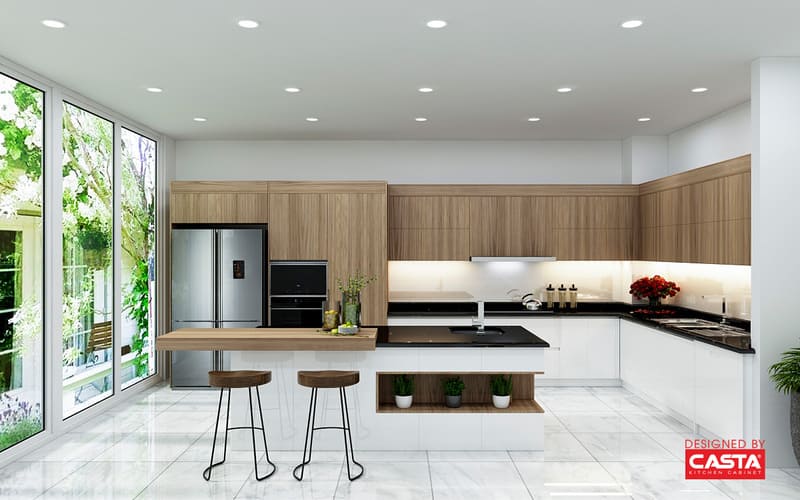
By embracing customization, advanced manufacturing, and robust quality assurance, the shift towards custom cabinets is redefining cabinet market trends. This evolving landscape offers significant benefits for contractors and cabinet brands, driving increased customer satisfaction and long-term market success in the custom cabinet industry.
5. How Contractors and Brands Can Navigate the Downward Trend
In a market characterized by evolving cabinet market trends and shifting US cabinet market statistics, contractors and cabinet brands must adapt strategically to remain competitive. With the custom cabinet industry facing challenges due to declining sales, it is essential to adjust procurement, marketing, and logistics strategies. Here’s a detailed look at how to navigate this downward trend:
5.1 Adapting to Market Changes
Procurement Strategy Adjustments:
Contractors and brands should focus on sourcing from reliable suppliers, such as those with proven track records like Casta Cabinetry. Monitoring material cost trends closely is critical in an environment of fluctuating raw material prices and labor rates. By negotiating long-term contracts, buyers can lock in stable pricing, mitigate the impact of rising cabinet price trends, and secure quality products consistently.
Learn more: Finding Reliable RTA & Knock-Down Furniture Suppliers in Vietnam
Value-Added Services:
To further differentiate themselves, contractors and cabinet brands can offer value-added services. This includes providing design consultations that help clients optimize cabinet layouts, finishes, and functionalities. Flexible pricing models and financing options can ease budget constraints, ensuring that even during market declines, projects remain viable and attractive. These services not only enhance customer satisfaction but also support positive cabinet market trends by driving repeat business and customer loyalty.
5.2 Capitalizing on Consumer Shifts Toward Custom Cabinets
Customized Product Offerings:
With a growing trend towards personalized solutions, developing a range of customizable cabinet options is key. Utilizing digital tools such as online configurators enables customers to visualize custom designs and tailor them to their specific needs. This approach not only appeals to modern consumers but also aligns with the upward shift in the custom cabinet industry. Emphasizing customization helps brands capture emerging cabinet market trends, as consumers increasingly value personalized aesthetics and functionality over standard, mass-produced options.
Targeted Marketing Strategies:
Digital marketing efforts should spotlight the unique features and benefits of custom cabinetry. Leveraging social media, targeted email campaigns, and participation in trade shows can showcase successful projects and innovative designs. By emphasizing sustainability, quality craftsmanship, and design flexibility, brands can tap into evolving consumer preferences and capitalize on the growth of the custom cabinet industry, thereby reinforcing positive cabinet market trends.
Learn more: Best cabinet manufacturers
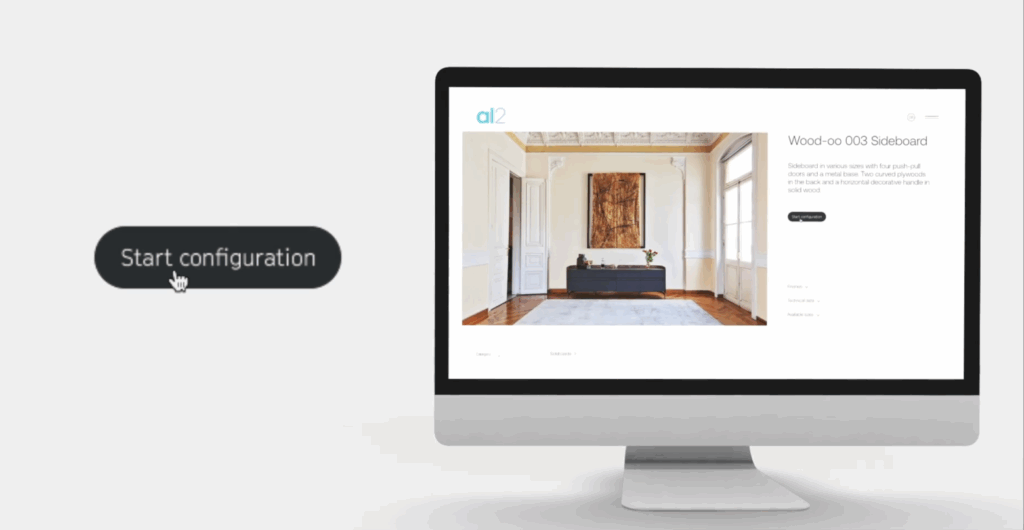
5.3 Increasing Sales with Quality and Service
Superior Craftsmanship and Customer Service:
High-quality materials, advanced production techniques, and rigorous quality control remain at the core of success in the cabinet market. Emphasizing superior craftsmanship not only enhances the product’s aesthetic appeal but also ensures long-term durability, a critical factor highlighted in US cabinet market statistics. Investing in comprehensive after-sales support further strengthens customer loyalty and brand reputation, especially in the competitive custom cabinet industry.
Learn more: Material & Finish Innovations: Elevating Cabinet Design and Durability
Optimized Logistics:
Efficient supply chain management is essential for maintaining competitiveness. By partnering with reliable logistics providers that offer real-time tracking, contractors and brands can minimize shipping delays and reduce lead times. Enhanced logistics ensure timely delivery of products, which is crucial for meeting tight project deadlines. This operational efficiency directly supports favorable cabinet market trends and reinforces the overall reliability of supply chains.
Learn more: Lead Times & Supply Chain Resilience: Navigating Potential Disruptions
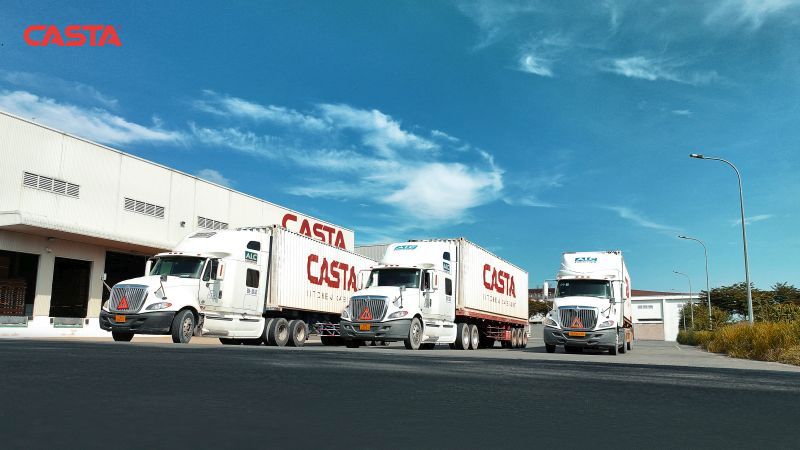
By adapting procurement strategies, embracing customization, and optimizing logistics, contractors and cabinet brands can successfully navigate the current downward trend in cabinet sales. These measures not only ensure stability but also position companies to take advantage of emerging cabinet market trends, such as the growth in the custom cabinet
Staying proactive and responsive to market dynamics will enable industry players to secure competitive pricing, maintain quality, and meet the increasing demands of today's market—all while capitalizing on favorable cabinet market trends for long-term success.
6. Global Influences on the US Cabinet Market
Global supply chain dynamics and international trade policies are reshaping cabinet market trends, influencing pricing, production, and supplier strategies. In today’s interconnected world, disruptions and strategic shifts in sourcing have significant implications for the US cabinet market, as reflected in US cabinet market statistics and the custom cabinet industry.
6.1 Impact of Global Supply Chains
Global supply chain disruptions have led to increased raw material costs and shipping delays, contributing to price volatility and influencing cabinet price trends. These challenges have forced manufacturers to adopt more flexible sourcing strategies and invest in advanced logistics to mitigate delays. Improved logistics management and flexible sourcing strategies now play a crucial role in stabilizing pricing and supply—key aspects of evolving cabinet market trends.
- Material Costs and Shipping Delays:
Disruptions in the global supply chain have pushed up raw material costs for wood and engineered panels. Increased freight charges due to shipping delays have further driven up overall costs in the cabinet market.
- Mitigating Supply Chain Issues:
Manufacturers are adopting flexible sourcing strategies, such as dual-sourcing materials and diversifying production locations. These strategies help maintain steady pricing despite global uncertainties, ensuring that cabinet market trends remain favorable for both suppliers and buyers.
6.2 Shift to Southeast Asia Amid Supply Chain Risks
Risk analyses have highlighted vulnerabilities in traditional sourcing markets, prompting a shift in production to more resilient regions. Manufacturers are increasingly relocating production to Southeast Asia, where supply chains are more stable.
- Risk Analysis:
Traditional manufacturing hubs are often affected by geopolitical tensions and unpredictable trade policies. In contrast, Southeast Asia offers a more resilient supply chain, enabling manufacturers to better manage risks.
- Vietnam’s Rising Prominence:
Vietnam has emerged as a preferred destination for kitchen cabinet manufacturing due to lower labor costs, stable trade policies, and advanced production capabilities. These factors have enhanced cabinet market trends by allowing Vietnamese manufacturers to offer high-quality, competitively priced products that resonate with US cabinet market statistics and drive growth in the custom cabinet industry.
- Labor & Overhead: Labor costs up to 30% below China, with a skilled workforce.
- Trade Stability: Multiple FTAs (CPTPP, EVFTA) and low tariff exposure to the U.S. market.
- Advanced Production: €6 M in CNC investments and robust port infrastructure support rapid scaling.
- Data Highlights
- U.S. imports of Vietnamese cabinets grew 73% YoY (Nov 2023–Oct 2024) to 1.23 M shipments, capturing 58% of U.S. cabinet imports versus China’s 19%
- Vietnam attracted $16 B in greenfield manufacturing FDI in 2023, signaling strong investor confidence .
- Vietnamese cabinet export value jumped from $500 M in 2023 to an estimated $850 M in 2025, a 70% increase .
Learn more: Logistics & Import: Streamlining the Shipping and Customs Process
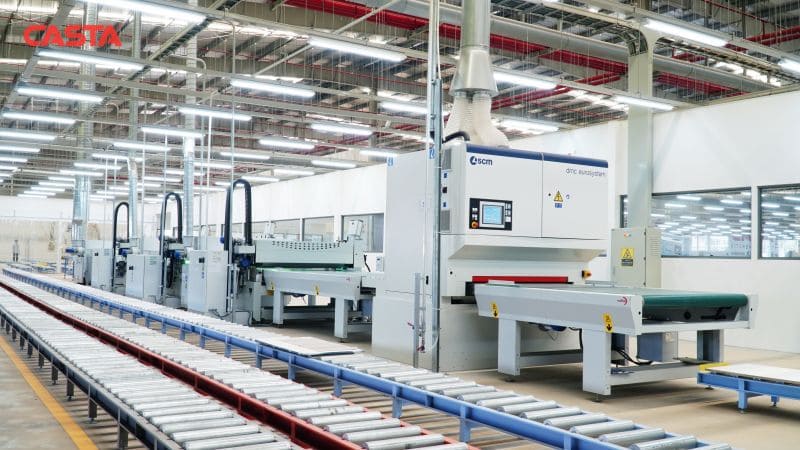
6.3 Vietnam’s Role in the Global Cabinet Market
Vietnam is rapidly establishing itself as a key player in the global cabinet market. Leading manufacturers, such as Casta Cabinetry, are leveraging state-of-the-art European machinery (HOMAG, Biesse, SCM) to produce top-tier cabinets that adhere to strict quality certifications.
- High-Quality Production:
Vietnamese manufacturers maintain stringent quality standards, ensuring products meet international benchmarks. This is reflected in the consistent production of high-quality cabinets that contribute to positive cabinet market trends.
- Competitive Pricing:
Efficiency gains from advanced production processes enable Vietnamese suppliers to offer competitive pricing in the US market, directly influencing cabinet price trends.
- Global Market Impact:
With improved supply chain resilience and quality assurance, Vietnam is capturing a larger share of the global cabinet market. This growing influence is reflected in US cabinet market statistics and is driving upward trends in the custom cabinet industry.
Learn more: Finding and Partnering with Vietnam Cabinet Manufacturers
7. The Future of Cabinet Sales and Market Trends
Looking ahead, cabinet market trends suggest a gradual recovery and transformation of the US cabinet market, driven by innovations in technology, sustainability, and customization. Future trends will not only shape cabinet price trends but also redefine how the custom cabinet industry operates.
7.1 Predictions for the Next Few Years
Industry analysts forecast that the US cabinet market will experience a gradual recovery, with key drivers including improved supply chain efficiency, rising demand for sustainable products, and ongoing technological advancements. Cabinet price trends are expected to rise at an annual rate of 5-7%, prompting buyers to secure competitive pricing now before further increases impact project budgets.
- Growth in Custom Cabinets:
As consumers seek more personalized solutions, the custom cabinet industry is expected to expand. Innovations in design and production, coupled with flexible customization, are likely to drive significant growth.
- Influence of Sustainability:
Increasing emphasis on sustainability will continue to shape cabinet market trends, as buyers prioritize eco-friendly materials and energy-efficient production methods.
Learn more: Non toxic kitchen cabinets
7.2 Growth Areas in the Cabinet Industry
Several emerging areas are set to drive future cabinet market trends:
- Sustainability and Smart Design:
The integration of sustainable materials and smart design innovations, such as IoT-enabled storage solutions, will be key growth areas. These technologies not only enhance functionality but also appeal to eco-conscious consumers, influencing cabinet price trends positively.
- Customization and Personalization:
The shift towards custom cabinetry is expected to continue, as consumers increasingly value tailored solutions that reflect their personal style and specific needs. This growth is bolstered by digital design tools and flexible production methods that support the custom cabinet industry.
- Technological Advancements:
Continued advancements in CNC machinery, robotics, and AI-driven design optimization will further enhance production efficiency and product quality. These improvements will help stabilize pricing and drive innovation in the custom cabinet industry, reinforcing positive cabinet market trends.
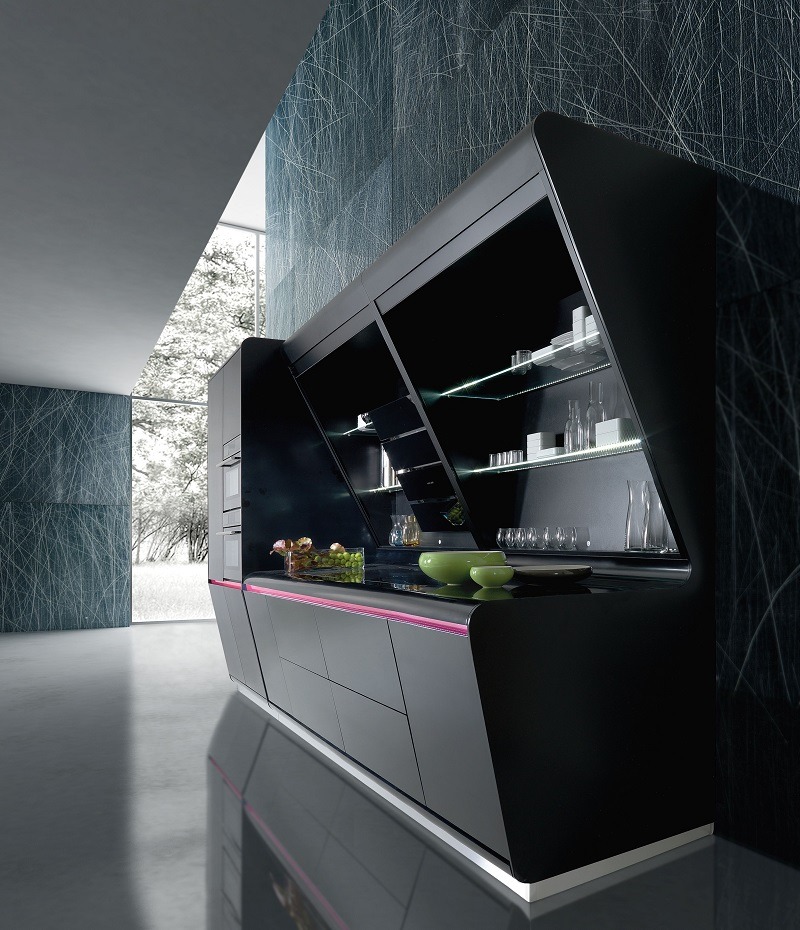
7.3 How Brands Can Stay Competitive
To remain competitive amid shifting cabinet market trends, brands must adopt proactive strategies:
- Staying Ahead of Design Trends:
Embrace innovations in sustainable materials and smart technology to offer unique, customizable products that meet evolving consumer preferences. Keeping production costs competitive while maintaining quality is essential for long-term success.
Example: Launch a “GreenTech” line using FSC‑certified veneers paired with built‑in wireless charging drawers, appealing to eco‑and tech‑savvy homeowners.
- Emphasizing Quality and Customization:
Invest in advanced manufacturing processes and quality control systems to ensure superior product performance. Brands that offer flexible, personalized solutions will have a competitive edge in the custom cabinet industry.
Example: Implement a web‑based configurator that lets clients visualize door profiles and finish colors in 3D, reducing revision cycles by 40%.
- Leveraging Market Data:
Regularly monitoring US cabinet market statistics and cabinet price trends can help brands adjust their strategies in real-time. This data-driven approach enables proactive pricing, efficient procurement, and optimized supply chain management.
Example: Adjust your material purchasing schedule based on the KCMA quarterly price index—stocking up when prices dip to protect margins and offer more competitive quotes.
8. Casta Cabinetry: Meeting the Challenges of a Changing Cabinet Market
Casta Cabinetry exemplifies how leading manufacturers can adapt to evolving cabinet market trends and overcome challenges in a declining market. Their strategic approach blends innovation, quality, and sustainability to offer a robust solution for contractors, cabinet brands, and furniture companies.
8.1 Tailored Solutions for Contractors and Brands
Casta offers highly customizable cabinet solutions designed to meet the diverse needs of contractors, designers, and cabinet brands across North America. By leveraging an iterative design process and flexible production capabilities, they ensure every cabinet is tailored to specific project requirements. This design flexibility aligns perfectly with current cabinet market trends, enabling clients to differentiate their product offerings and capture a niche market.
Learn more: Ideal Custom Cabinets
8.2 On-Time Delivery and Logistics Support
With a robust supply chain and advanced logistics systems, Casta guarantees timely delivery of custom cabinetry, even for complex, large-scale projects. Their commitment to streamlined logistics minimizes delays and ensures that contractors can adhere to tight project deadlines. This reliability in delivery supports positive cabinet market trends by reinforcing supply chain stability and reducing overall project costs.
Learn more: Outstanding International Cabinets
8.3 Sustainability and Health Safety
Casta’s eco‑friendly cabinet production is underpinned by a suite of global certifications:
- FSC Certification ensures responsible wood sourcing.
- CARB Phase 2 (US) and E1 Standard (EU) certified MDF and particle‑board cores limit formaldehyde emissions to healthy levels.
- JIS and REACH compliant adhesives, plus low‑VOC, waterborne finishes tested to EPA TSCA Title VI and EU regulations, guarantee non‑toxic surfaces.
These certifications confirm compliance with both North American (CARB, EPA, TSCA) and European (E1, REACH) standards, meeting the toughest green‑building requirements (LEED, BREEAM) and appealing to eco‑conscious contractors and brands focused on sustainability and health safety.
Learn more: Casta’s ISO-Qualified Cabinet Certification: Setting the Gold Standard for Quality and Reliability

By integrating tailored design solutions, reliable logistics, and sustainable production practices, Casta Cabinetry not only meets but exceeds the challenges posed by a changing cabinet market. Their strategic approach positions them as a trusted partner for brands and contractors aiming to stay ahead of cabinet market trends while delivering premium, custom cabinetry solutions.
9. Moving Forward in a Declining Market
The recent U.S. decision to end its tax‑evasion probe on Vietnamese wooden cabinets arrives at a time of remarkable export growth. Between November 2023 and October 2024, U.S. imports of cabinets from Vietnam soared to 1,231,927 shipments—a 73% year‑over‑year increase—while total Vietnamese cabinet exports reached 1,702,235 shipments, up 63% over the same period. Meanwhile, the global kitchen cabinet market—valued at $160 billion in 2022—is projected to grow at a 6.4% CAGR through 2030, and U.S. demand is forecast to rise to 135 million units by 2028 (1.1% annual growth). By removing punitive tariffs and stabilizing trade policies, these trends create a more predictable environment for contractors and brands—ensuring they can capitalize on both explosive export momentum and steady domestic demand.
Key takeaways include:
- Enhanced Export Opportunities: Vietnamese cabinet exports have surged, reflecting robust cabinet market trends and improved supply chain stability.
- Competitive Pricing: Lower tariffs and favorable trade agreements enable suppliers to offer free trade cabinets from Vietnam at more competitive prices.
- Improved Quality and Sustainability: Adherence to strict quality standards and eco-friendly manufacturing practices positions Vietnamese suppliers at the forefront of global cabinet market trends.
For contractors, cabinet brands, and furniture companies, now is the time to explore partnerships with leading cabinet suppliers from Vietnam, such as Casta Cabinetry, to capitalize on these positive trends. Embracing these opportunities will not only drive cost savings and efficiency but also future-proof your investments in a rapidly evolving market.
10. FAQ
What is the impact of the KCMA report on the cabinet industry?
How can contractors benefit from custom cabinetry during a market decline?
What are the key advantages of sourcing cabinets from Vietnam?
How does the US decision affect US cabinet market statistics?
What future trends should brands watch in the cabinet market?
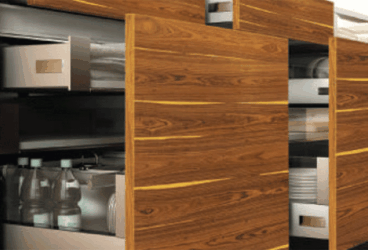
MDF vs Plywood for Kitchen Cabinets – Which is Better?...
MDF vs Plywood for kitchen cabinets is one of the most important decisions contractors and furniture brands must make wh...
11/14/2025 | David Nguyen
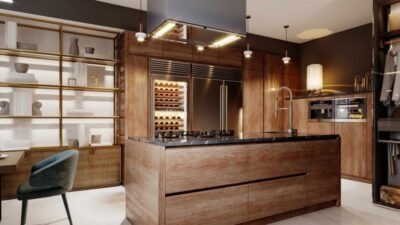
Plywood Kitchen Cabinets: Pros and Cons Explained for Contra...
Plywood kitchen cabinets are now one of the most preferred options in modern kitchen manufacturing, combining durability...
11/12/2025 | David Nguyen
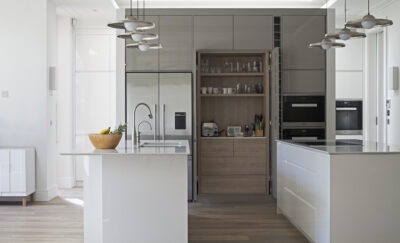
Best Italian Kitchen Cabinets: Modern Design, Precision Craf...
Italian kitchen cabinets represent the gold standard in modern kitchen design — celebrated for their craftsmanship, slee...
10/29/2025 | David Nguyen
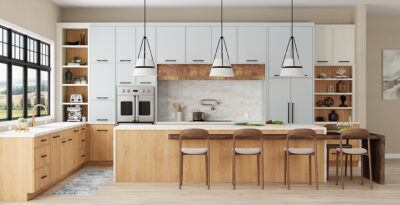
European vs American Kitchen Cabinets: Key Differences &...
European vs American kitchen cabinets is a core decision for anyone specifying cabinetry for modern buildings or homes. ...
10/27/2025 | David Nguyen
Contact us
Casta is always ready to listen and answer all customers' questions
